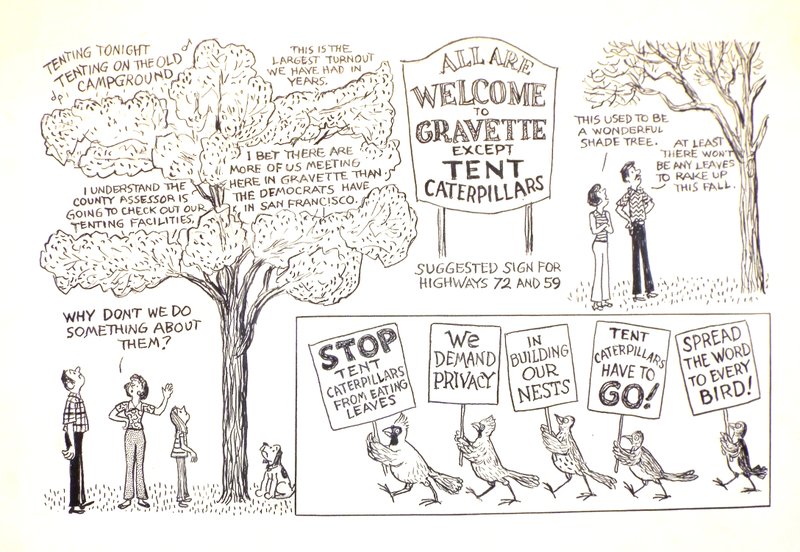WESTSIDE -- An invasion of fall web worms and tent worms has hit in Eagle Observer territory and the region, defoliating trees and shrubs and leaving unsightly webs on branches and sometimes enveloping entire trees.
It is the first such massive invasion of the caterpillars in approximately 30 years. A similar hatching of what was called tent caterpillars occurred during the summer of 1984.
County extension ion agent Neal Mays said there are at least three different caterpillar larvae species which attack trees and build webs.
"Tent caterpillars usually build webs in the limb crotches of trees -- mostly fruit trees -- and are an entirely different species than fall web worms," Mays said.
Fall web worms feed mainly on nut trees such as the black walnut or hickory. Other favorite targets are persimmon trees and sometimes sweet gum and birch trees. The caterpillars usually begin their web building and feeding at the ends of tree branches.
"People often refer to fall web worms as bag worms, which are a totally different species of caterpillar. Those larvae attack evergreen trees and shrubs such as juniper. They feed independently and do not form webs but spin small bag-shaped homes that dangle on the host plant limbs. The most efficient method of control is to pick them off and dispose of them by burning. Insecticide at that stage of development is basically ineffective," Mays said.
The infestation this year is worse than normal, though Mays said evidence of the worms was noticeable during the past two summer and fall seasons. The severity of the infestations can vary greatly, he said.
"Many people worry such worm infestations can kill a tree," Mays said. "There is no proven, credible evidence that will happen unless the tree is already diseased or damaged," he added.
The agent said that burning webs from the trees is not recommended because it could do more damage to the trees than to the worms.
Mays said people need not worry that web-infested trees will die since most trees are already nearing the end of their seasonal cycle. They will soon be shedding their leaves and, since the buds for next year's growth are already formed, the trees can be expected to leaf out as usual, Mays explained.
The tent caterpillar infestation of 1984 resulted in an appropriate cartoon drawing by Robert Day, a cartoonist who had retired from New Yorker Magazine. Day and his wife, Ethel, then lived in the Ozark Estates area southeast of Gravette.
Day was nationally known for his 40 years of cartoon drawing for the New Yorker, as well as for magazine covers and book illustrations. He died in 1985 at the age of 84, less than a year after his clever tent caterpillar drawing which appeared in the Gravette News Herald.
General News on 09/30/2015

